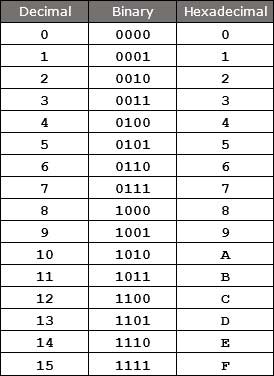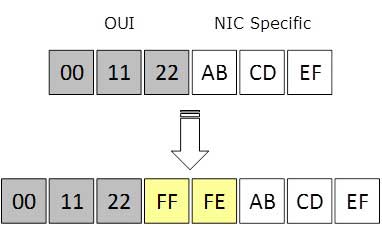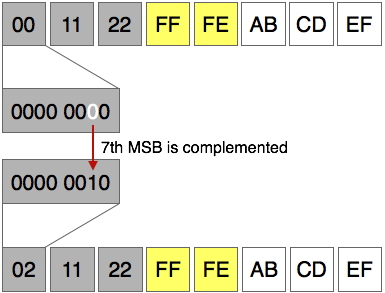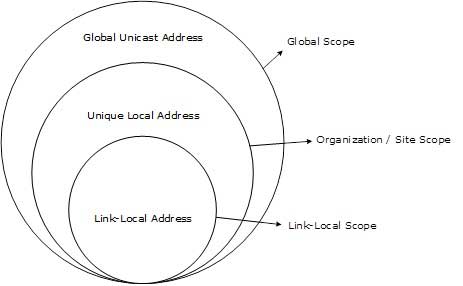Hexadecimal Number System
Before introducing IPv6 Address format, we shall look into Hexadecimal Number System. Hexadecimal is positional number system which uses radix (base) of 16. To represent the values in readable format, this system uses 0-9 symbols to represent values from zero to nine and A-F symbol to represent values from ten to fifteen. Every digit in Hexadecimal can represent values from 0 to 15.
Address Structure
An IPv6 address is made of 128 bits divided into eight 16-bits blocks. Each block is then converted into 4-digit Hexadecimal numbers separated by colon symbol.For example, the below is 128 bit IPv6 address represented in binary format and divided into eight 16-bits blocks:
0010000000000001 0000000000000000 0011001000110100 1101111111100001 0000000001100011 0000000000000000 0000000000000000 1111111011111011Each block is then converted into Hexadecimal and separated by ‘:’ symbol:
2001:0000:3238:DFE1:0063:0000:0000:FEFBEven after converting into Hexadecimal format, IPv6 address remains long. IPv6 provides some rules to shorten the address. These rules are:
Rule:1 Discard leading Zero(es):
In Block 5, 0063, the leading two 0s can be omitted, such as (5th block):
2001:0000:3238:DFE1:63:0000:0000:FEFBRule:2 If two of more blocks contains consecutive zeroes, omit them all and replace with double colon sign ::, such as (6th and 7th block):
2001:0000:3238:DFE1:63::FEFBConsecutive blocks of zeroes can be replaced only once by :: so if there are still blocks of zeroes in the address they can be shrink down to single zero, such as (2nd block):
2001:0:3238:DFE1:63::FEFB
Interface ID
IPv6 has three different type of Unicast Address scheme. The second half of the address (last 64 bits) is always used for Interface ID. MAC address of a system is composed of 48-bits and represented in Hexadecimal. MAC address is considered to be uniquely assigned worldwide. Interface ID takes advantage of this uniqueness of MAC addresses. A host can auto-configure its Interface ID by using IEEE’s Extended Unique Identifier (EUI-64) format. First, a Host divides its own MAC address into two 24-bits halves. Then 16-bit Hex value 0xFFFE is sandwiched into those two halves of MAC address, resulting in EUI-64 Interface ID.
To convert EUI-64 ID into IPv6 Interface Identifier, the most significant 7th bit of EUI-64 ID is complemented. For example:

Global Unicast Address
This address type is equivalent to IPv4’s public address. Global Unicast addresses in IPv6 are globally identifiable and uniquely addressable.
Link-Local Address
Auto-configured IPv6 address is known as Link-Local address. This address always starts with FE80. First 16 bits of Link-Local address is always set to 1111 1110 1000 0000 (FE80). Next 48-bits are set to 0, thus:
Unique-Local Address
This type of IPv6 address which is though globally unique, but it should be used in local communication. This address has second half of Interface ID and first half is divided among Prefix, Local Bit, Global ID and Subnet ID.
Scope of IPv6 Unicast Addresses:

The scope of Link-local address is limited to the segment. Unique Local Address are though locally global but are not routed over the Internet, limiting their scope to an organization’s boundary. Global Unicast addresses are globally unique and recognizable. They shall make the essence of Internet v2 addressing.
http://ipv4-ipv6.blogspot.com/2014/07/address-types-formats-ipv6.html

Post a Comment